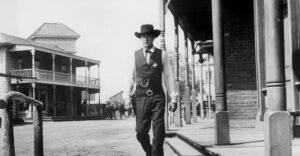Gaining traction in the era of silent films, Westerns were an embodiment of American machismo in cinema. It depicted the desolate and harsh landscape of the Old West, populated with cowboys, sheriffs, and outlaws. Emerging as a popular film genre, it depicted the self-image of America. The plots depicted individuals or groups striving to survive in the arid deserts of the Old West, and man-versus-nature was a common theme in the works. They emphasized the lawlessness and violence found in these parts, where domineering over others was a way of life, and civilization was a distant notion.
With dashing actors like John Wayne and James Stewart, and prolific directors like John Ford, Sergio Leone, etc., the Western genre is as American as it gets. Eventually, it branched out to other genres such as the spaghetti western and continues to influence cinema even today. Very quickly then, here’s our list of the best Western movies of all time.
RELATED: Django (1966) Review: Bleak, Bold And Unforgiving
Greatest Western Movies
1. The Good, the Bad, and the Ugly (1966)
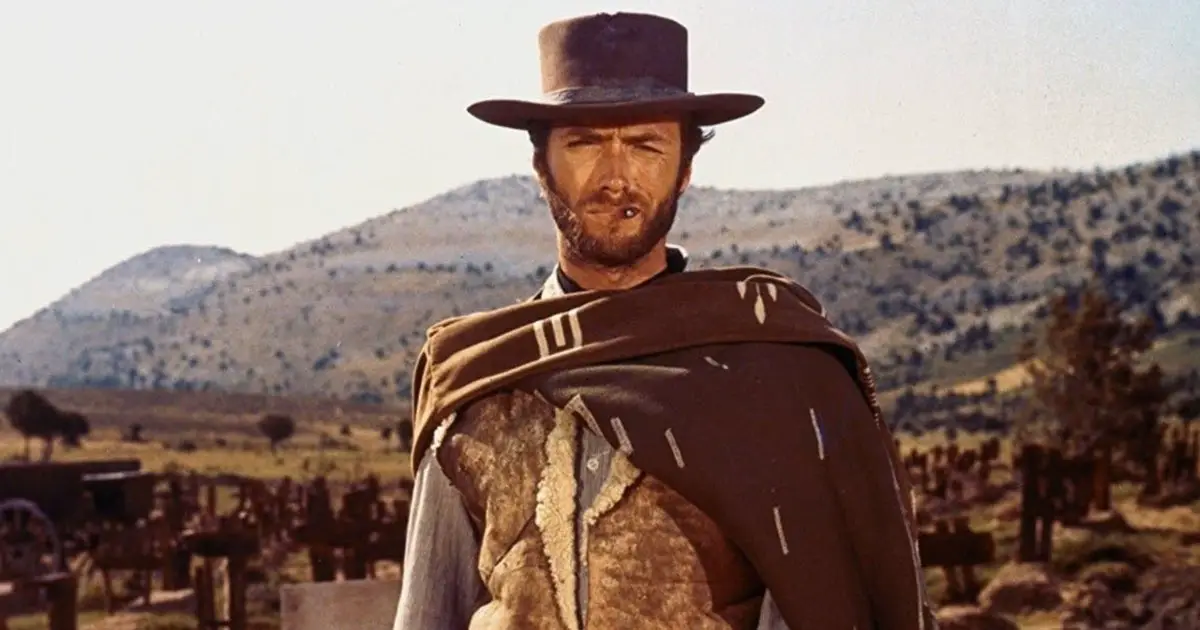
Arguably the most widely known work of the genre, The Good, the Bad, and the Ugly has all the elements of a classic Western. The last installment in Sergio Leone’s Dollars Trilogy revolves around three men – a bandit, Tuco, a mercenary, Angel Eyes, and a bounty hunter, Blondie. They cross paths and betray each other in their search for gold. Clint Eastwood’s iconic portrayal of The Man with No Name and Ennio Morricone’s instantly recognizable soundtrack lend the film immense gravitas. The story unfolds like something akin to a moral struggle between antiheroes and outlaws, creating a definitive theme that went on to influence subsequent works in the genre.
Leone has insisted that the film is supposed to be a satirical deconstruction of the genre, posing questions about the rugged figures held as heroes. The characters of the film have a strong sense of justice and are portrayed as antiheroes who do bad things but are capable of good deeds too.
2. Once Upon a Time in the West (1968)
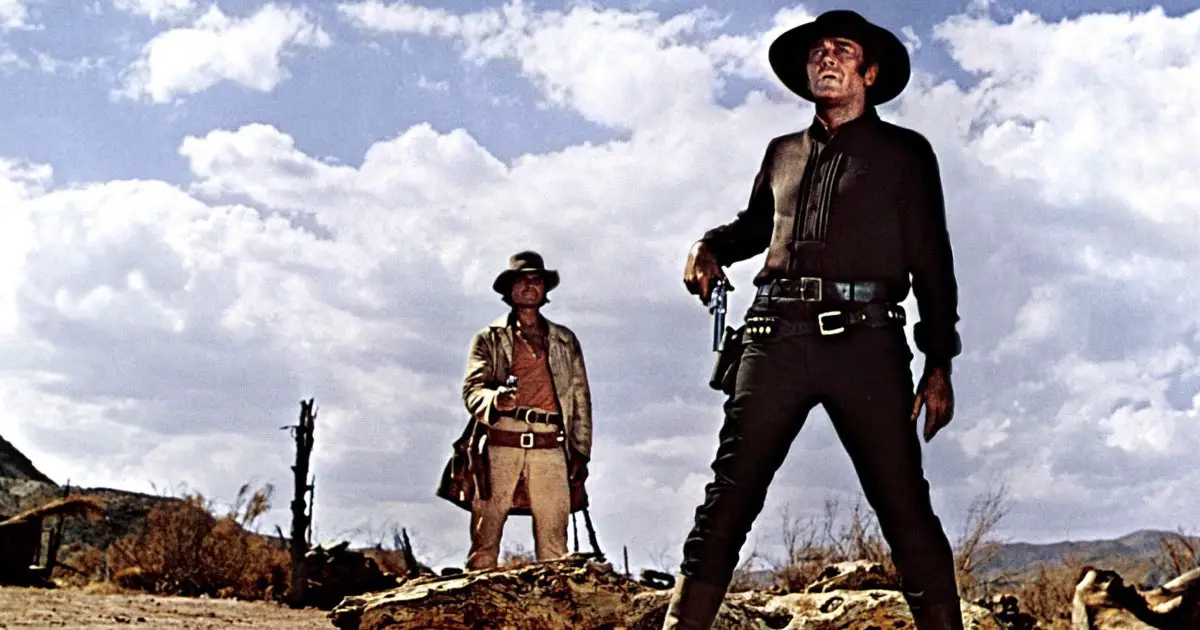
Sergio Leone’s Once Upon a Time in the West is a no holds barred melodrama that revolves around rivals gunning to get a piece of land. Rail baron Morton wants a piece of land owned by Mc Bain, and sends his henchman, Frank to intimidate him. When Frank kills McBain instead, it brings him face to face with a shadowy figure from his past, known only as Harmonica. At nearly three hours of runtime, the complex nature of the plot and the connection between characters can be exhausting to keep up with. However, Leone’s operatic staging that meticulously explores the lawless American frontier is bound to keep you riveted. As the hero stalks Frank for revenge, one cannot help but root for him.
The code of honor intrinsic to the Western genre is crucial here, and the film finds an impressive antihero in Harmonica. The stark and sweeping aesthetic he employed in his spaghetti westerns, especially the Dollars trilogy, is perfected here.
3. Stagecoach (1939)
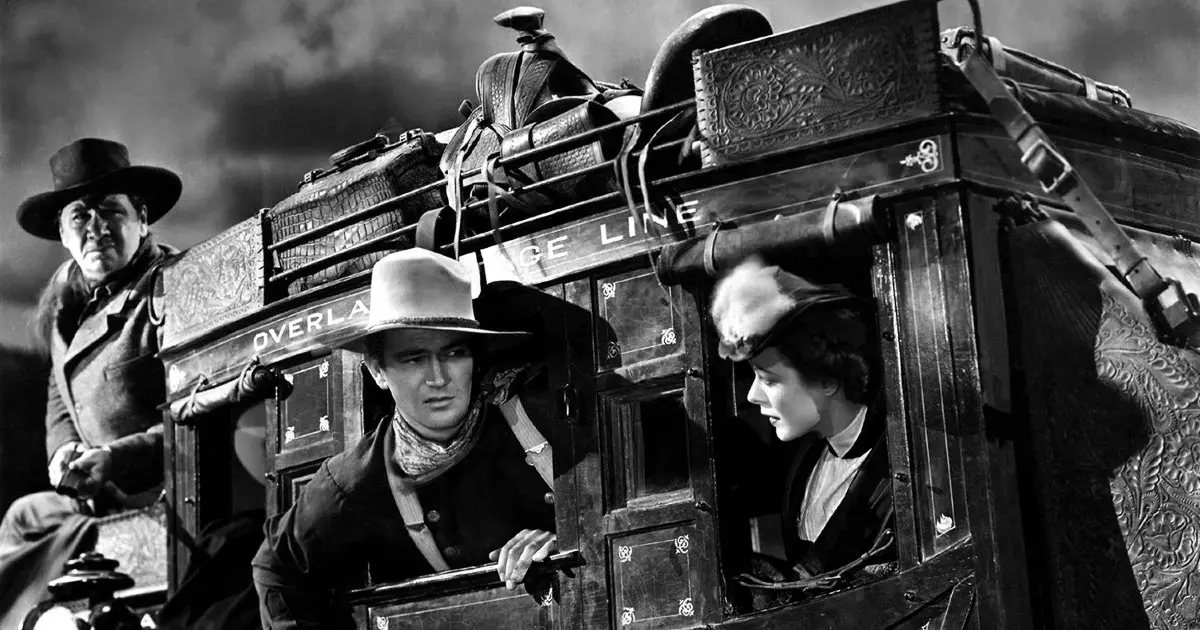
Directed by John Ford, Stagecoach cemented John Wayne’s reputation as the go-to star for Western films. Adapted from a short story by Ernest Haycox, the story follows a stagecoach set to cross through dangerous Apache territory, in the middle of a skirmish between the Apache and the army. A rag-tag band of strangers is brought together on this journey and encounters Ringo Kid, a young convict who has escaped from prison. Though Western genre films have existed since the dawn of American cinema, Stagecoach was one of the first Western films to focus on morally ambiguous characters and social issues. It doesn’t stick to rigid definitions of good or bad. They are nuanced characters who break the conventions.
Despite having been made nearly ninety years ago, it boasts thrilling set-pieces and superbly choreographed action sequences. The horse chase scene during the Apache attack is particularly well done.
4. High Noon (1952)
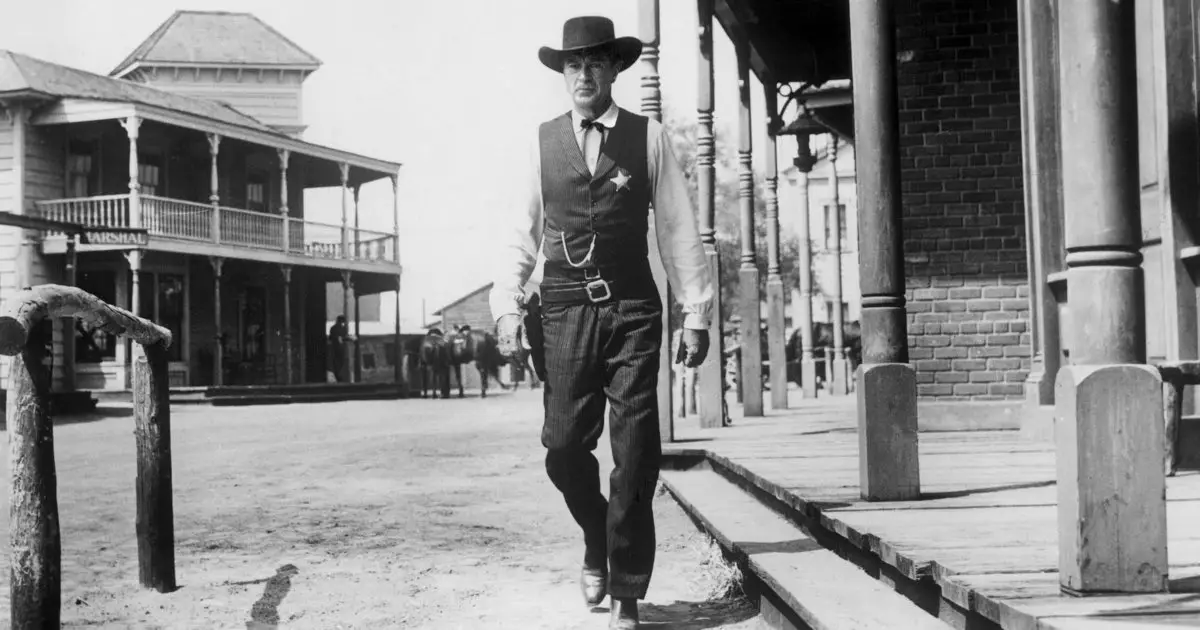
Notable for unfolding in nearly real-time, High Noon revolves around a town marshall, Will Kane. Kane has just gotten married and is caught between his desire to defend his town against a band of killers, and retire and leave with his new wife. The story brings a fresh perspective to the traditional plotting of Westerns, a majority of which are about power & money-hungry anti-heroes. Gary Cooper as the laconic Will Kane offers a powerful performance. His character’s steadfast devotion to duty is reminiscent of an old-timey Captain America. Kane’s sense of justice and duty also drew criticism and controversy at the time of the film’s release.
Apart from its controversial political themes, critics as well as fellow peers like John Wayne felt that Kane is not a true representation of a frontier hero. Nevertheless, the film has been hailed as an early example of revisionist Westerns, and the director Fred Zinneman has described it as “a man’s conflict of conscience.”
5. Rio Bravo (1959)

Starring John Wayne in a familiar yet winsome story of machismo and bravura, Rio Bravo follows the friendship between town sheriff John T Chance, and a former deputy, the drunkard Dude. When they capture the spoiled younger brother of a local baron, a band of rowdy outlaws arrive to make their life difficult. Howard Hawks and John Wayne reportedly made the film due to their dislike of the character of the sheriff in High Noon. The narrative’s focus on the friendship between Chance and Dude works in its favor.
The chemistry between the disorderly Dude and the steadfast, law-abiding Chance is easygoing, and quite touching at times, as they risk their lives for each other. Not only does it provide a hilarious dynamic to the story, but also allows audiences to actively root for the characters. Dean Martin as Dude offered one of his career-best performances. Overall, it’s a thoroughly enjoyable film that balances solid action and silly comedy as only Westerns can.
6. My Darling Clementine (1946)
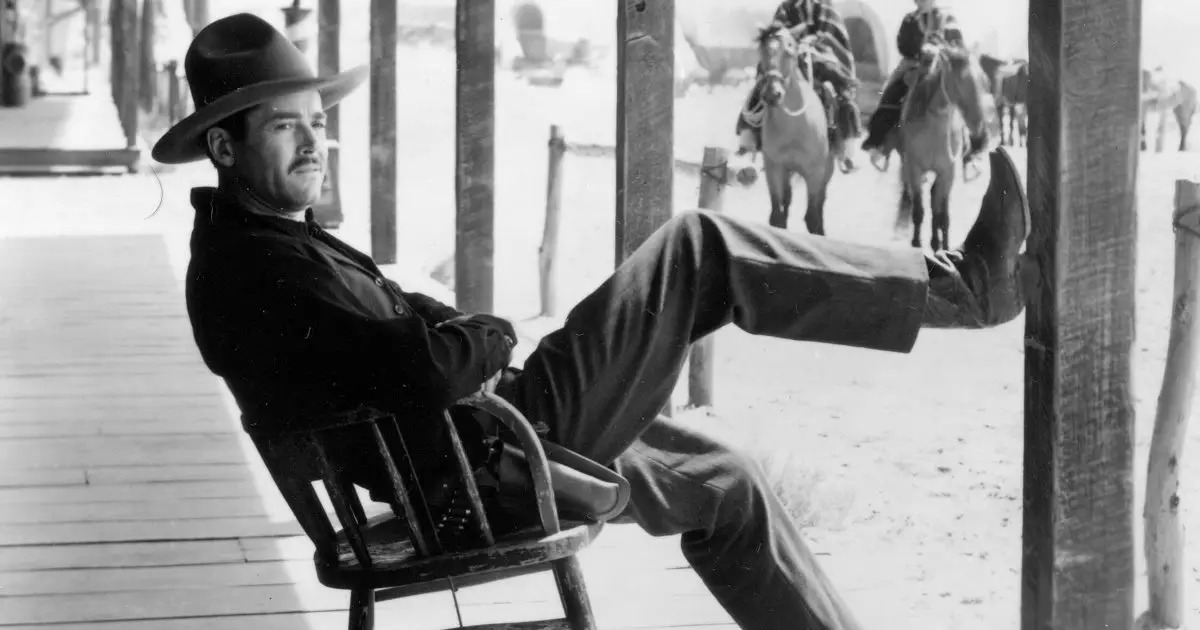
A dramatization of the life of famed Old West lawman Wyatt Earp, My Darling Clementine focuses on his exploits at O.K. Corral. The film presents a conflict of epic proportions between the Earps, and the Clantons, a group of ranchers. Even though the film is not quite accurate and greatly furnishes the truth of what happened, it uses the events to spin a thoroughly engrossing story. It dramatizes the tiff between the Earps and the Clantons to represent the contrasting forces of the genre itself – lawful civilization vs chaos. In naming the film after a character who signifies morality in the story, the film presents a newer, optimistic vision of the Old West. The nuanced examination of the men behind some of the most enduring myths of the Old West yields a fascinating character study.
In fact, the story or legend of Wyatt Earp is explored repeatedly in the Western. My Darling Clementine itself was the fourth Wyatt Earp movie. Yet there’s something phenomenal in Ford’s calm, flawless visual harmony which has greatly influenced the film form of Westerns.
7. Butch Cassidy and the Sundance Kid (1969)
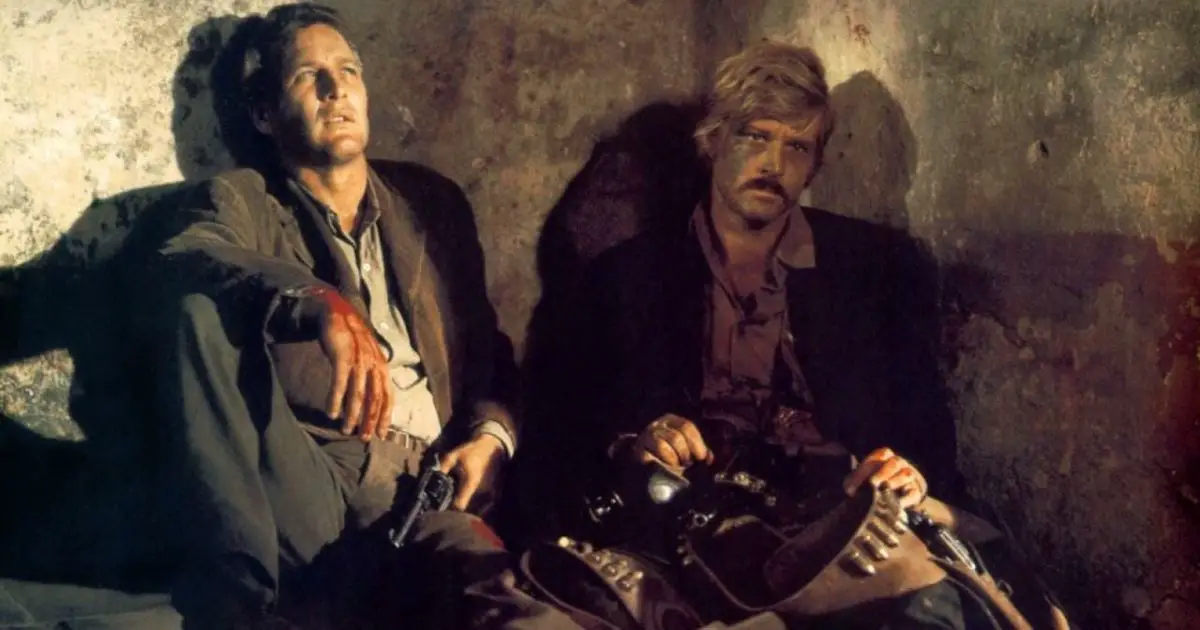
Based on the real-life adventures of the eponymous duo, Butch Cassidy and the Sundance Kid follows the pair as they steal, lie, and shoot their way out of tight spots. The affable dynamic between Paul Newman and Robert Redford (who play Cassidy and the Sundance Kid respectively) is extremely immersive and imparts a level of relatability to this subversive Western. Even as the pair commit petty crimes and shoot men down, the audience cannot help but be on their side. Despite knowing the doomed end these outlaws must face, the film delivers an entertaining plot with a solid friendship that fully blossoms on screen.
The titular ride-or-die heroes have since then gone down as one of the most iconic duos in American culture, on par with the likes of Bonnie and Clyde. Writer William Goldman was reportedly inspired by Fitzgerald’s “there are no second acts in American lives” and Butch Cassidy and The Sundance Kid is the very embodiment of that sentiment.
8. The Wild Bunch (1969)
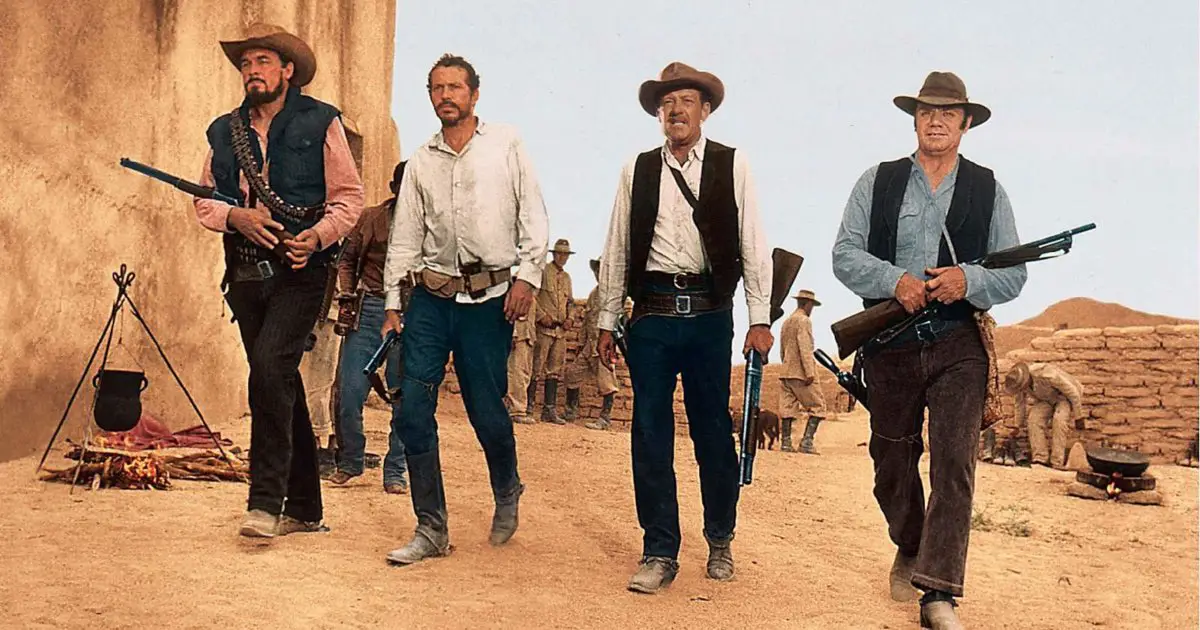
With a title like that, The Wild Bunch makes no secret of its feisty story regarding an aging outlaw, Pike Bishop who wants to retire. His gang is up for one final task – robbing a cache of silver. They are apprehended by his former foe, Thornton. When you reduce The Wild Bunch to its plot, then this is another familiar, convoluted story of shoot-outs and stomach-churning violence. From the opening sequence of children throwing scorpions into an anthill to the thrilling train-robbery scene, Pecinpah’s symbolism and bold images are notable in the Western genre aesthetics. Besides, in Peckinpah’s dog-eat-dog worldview of the American Frontier, there are no morally superior heroes.
Each of his anti-hero characters is driven by their own motivations, and they do what they think is the right thing to do. In spite of the bloodbath and shocking set-pieces, The Wild Bunch makes a complex, nihilistic statement about the blurring boundaries between good and evil in the world.
9. The Searchers (1956)

Often cited as the magnum opus amidst the collaborative efforts between John Wayne and John Ford, The Searchers follows Ethan Edwards as a war veteran searching for his niece, Debbie. Many years pass before he finds her living as one of the Comanches, the tribe responsible for his family’s death. John Wayne portrays Ethan with convincing rage, painting a terrifying picture of obsessive hatred. The film attempts to address the stereotyping of Native Americans and other people of color as villains in the Western genre. Although it still has some problematic ideas, the film was groundbreaking for its ambivalent story that never cast any one side as wholly good or bad. Critics have considered the character of Ethan Edwards a great anti-hero, with Greil Marcus comparing him to Captain Ahab from Moby Dick.
Terrifyingly existential in its scope, The Searchers explores nuance, empathy, and humanity in all of its characters, creating a rich narrative within a tragedy. The wide-shot cinematography is absolutely breathtaking, and its aesthetic influence was deeply felt in the subsequent decades of American cinema.
10. Red River (1948)
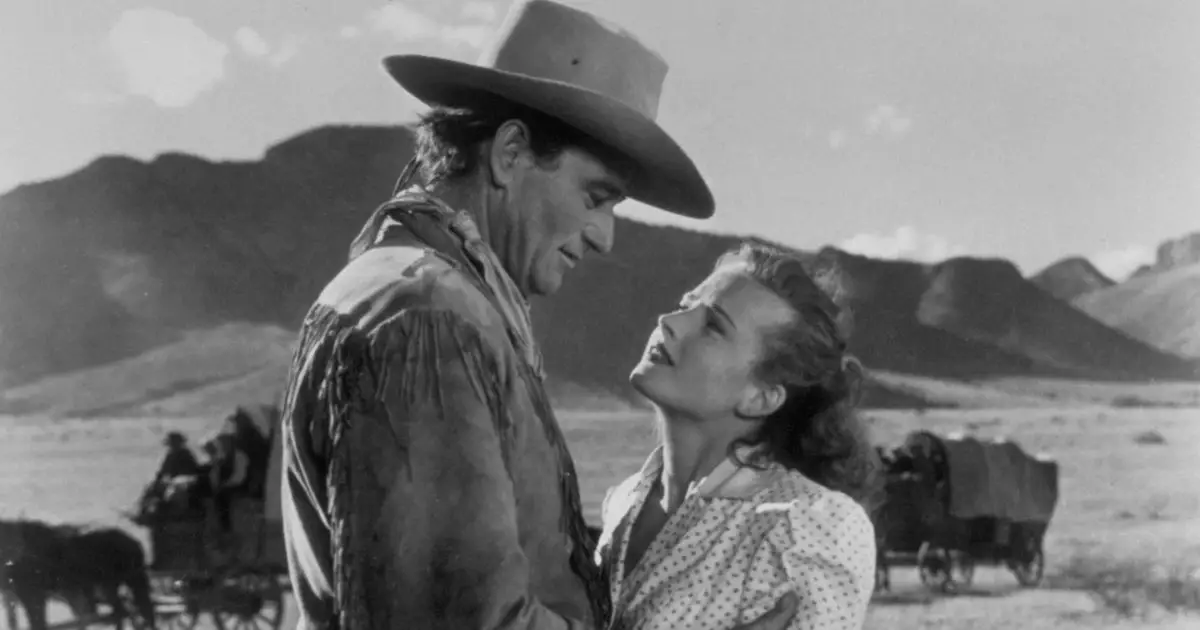
Based on the first cattle trail on the Chisholm trail, from Kansas to Texas, Red River tells the story of Thomas Dunson (John Wayne) and his efforts to build a cattle ranch. Despite many conflicts with the Native Americans, he is successful in establishing an empire. However, his past skirmishes have left him tyrannical and paranoid. The story is decidedly more grounded than most Westerns are, forgoing revenge and escapist themes to present historically relevant visions of survival and entrepreneurship. The film makes good use of the breathtaking beauty of the West to present an authentic vision of hardship and survival. The relationship between Tom and his protégé, Matt (Cliff Montgomery) is unexpectedly touching and rife with emotion.
Beautifully composed sequences heighten the exciting story, such as a shot of cowboys riding simultaneously. As the aging riders collectively yell hee-yaw! one cannot help but feel a swell of emotion, just as Ford must’ve intended us to.
11. Shane (1953)
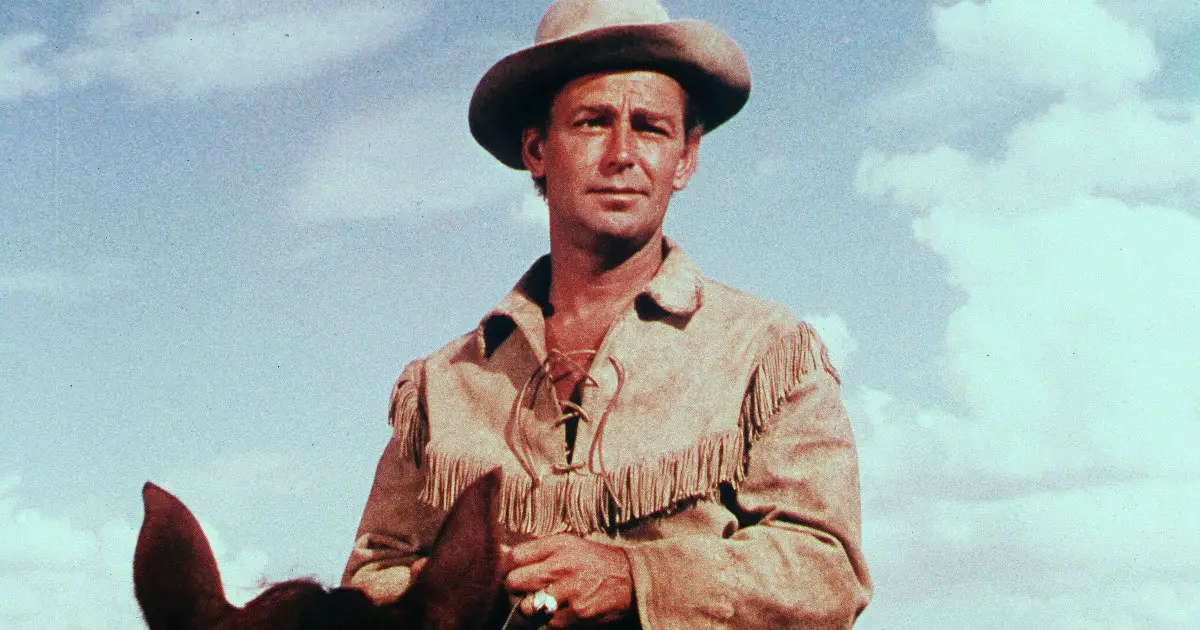
Shane revolves around the titular gunfighter hero, who rides into Wyoming territory after the Civil War. A man of few words with a mysterious past, he crosses paths with Rufus Ryker, a local land baron. The film boldly portrays the protagonist as someone with a strong moral compass. Instead of depicting the hero as a sensitive man capable of change, the story goes against the grain. While Shane might have started his journey alone, he ends up finding purpose with the Starrett family. It implements a reversal of tropes as far as hegemonic depictions of masculinity are concerned. Shane might have started off as a typical, lone wolf, but his time with the Starretts changes him for the better.
The last scene of the film is a sucker punch – a tearful goodbye that will melt even the coldest of hearts. The film stands tall not only as a Western but also as a complete and emotionally resonant work of art.
12. Johnny Guitar (1954)
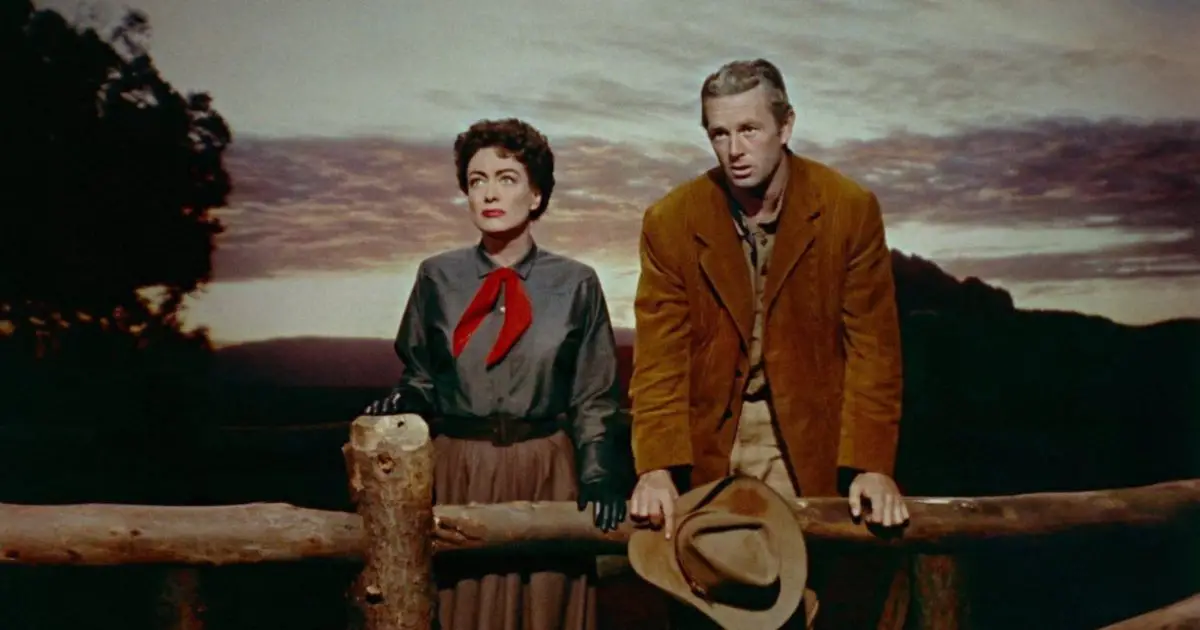
Johnny Guitar is one of the rare films to feature a strong, female leading character, as compared to most films in the genre that typecast actresses as either vapid seductresses or damsels in distress. The story follows Vienna, a feisty saloon keeper who crosses paths with the mysterious Johnny Guitar. As outlaws try to force her out of town, Johnny is then revealed to be her former lover. A charismatic performance from Joan Crawford as Vienna and her chemistry with Sterling Hayden works wonders for the film. The plot might come across as a bit hackneyed. But it’s secondary to Ray’s intensely showcased thematic and visual motifs.
Beneath the campy set-up lie the layers of psycho-sexual conflicts and a deft critique of McCarthyism. It was also one of the most ambitiously stylized Westerns of its time. Eventually, the most fun part of Johnny Guitar is the snappy dialogue.
13. The Assassination of Jesse James by the Coward Robert Ford (2007)

Revisionist westerns in recent times are hard to come by, especially ones that focus less on revising history, and more on the inner lives of the people they portray. Brad Pitt and Casy Affleck star as Bob Ford and Jesse James respectively, in Andrew Dominick’s epic. The film follows the relationship between the two men and the events that led up to the aforementioned killing. Instead of being jam-packed with mindless action, the story does an excellent job of focusing on the feelings of adulation that Bob has for James. The eventual change in his devotion that turns into resentment is brilliantly portrayed in a believable way. Andrew Dominick’s direction focuses on their love-hate relationship of sorts; in this aspect, it is similar to his first film Chopper.
Too often films rely on violence to display the depth of something terrible, but Dominick’s work stands out for its interpretation of a doomed relationship that can only end one way. After Wyatt Earp, Jesse James is one of the staple characters of Western. Therefore, it’s fascinating to see Dominik looking beneath the exaggerated heroism of the infamous outlaw, and truly look into his life, death, and eventual idolization.
14. Unforgiven (1992)

Set against a turning point in the Old West, when outlaws transitioned into civil society, Unforgiven follows William Munny, a retired killer, on one last mission. While he retired a long time ago, and now works as a farmer, he agrees to the mission to provide for his children, to whom he feels duty-bound. Directed by Clint Eastwood as a tribute to Sergio Leone and Don Seigel, the film ponders morality in the context of violence and crime in the Old West. As William agonizes over killing one last time, the film highlights the fact that nobody is entirely innocent, and it’s the motives that matter.
While none of the characters are entirely good or have a strict set of principles, the film does not condemn their actions. Instead, it portrays them in various shades of ambivalence and draws out a rich depiction of common tropes in the genre. Unforgiven is notable as one of the three Westerns to have won an Academy Award for Best Picture.
15. McCabe & Mrs. Miller (1971)
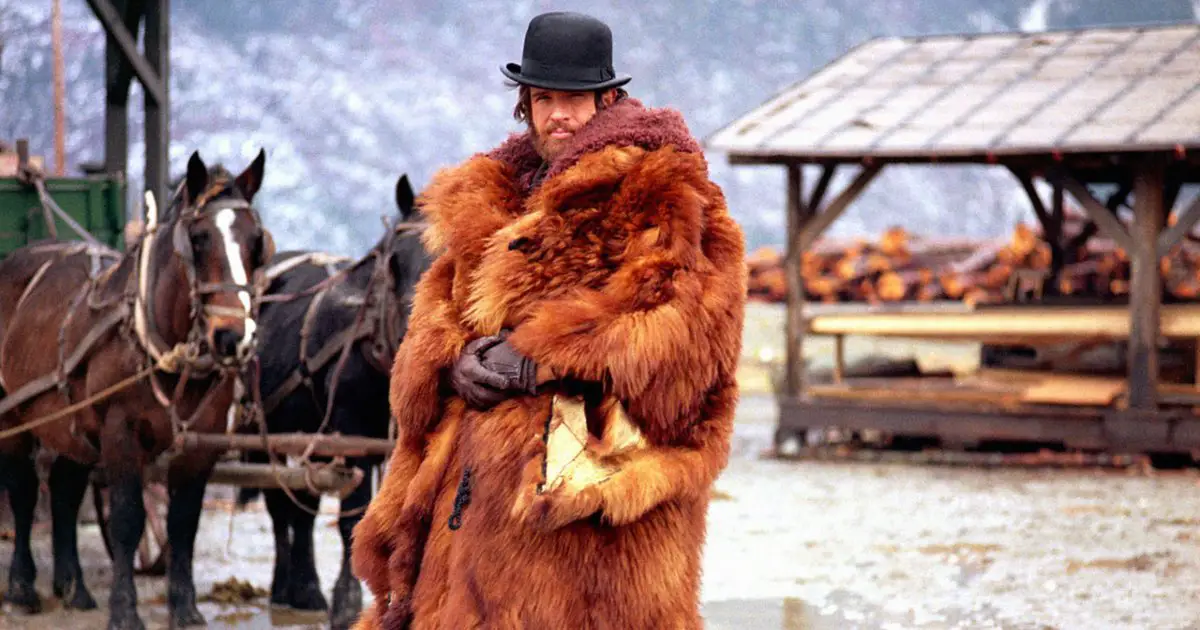
Often touted as an anti-western for its subversion of genre conventions, McCabe and Mrs. Miller revolves around the titular pair who cross paths in a small town, and find success with each other. One is a small-time gambler and the other is a prostitute. As their wealth attracts bounty hunters and land barons, they move towards an inevitable end. The film is a tragicomedy told within the structure of a Western, where the protagonists gain immense clout only to lose it all. The film utilizes an allegorical story structure to provide commentary on the dark side of the American Dream. The characters of McCabe and Mrs. Miller are far from perfect, but the story sympathizes with their actions and treats them as two lost individuals doing the best they can to survive in a lawless land.
With brilliantly layered sound editing and a haunting soundtrack by Leonard Cohen, the film brought depth and beauty to a genre that was otherwise heading for oblivion.
Conclusion
Westerns might have a very specific setting of the barbarous, lawless Old West, but there is something about the themes that are universal. Stories of revenge, honor, greed and morality told through nuanced depictions of violence, and stylishly presented on screen are fascinating to behold. They are not so much films, but cinematic experiences. Even though the Western genre has been done and dusted for quite a while now, every now and then, its influence is visible in films that range from noir to blockbuster action flicks. With renowned auteurs like Tarantino, Kurosawa, the Coen brothers, and Scorsese drawing inspiration from the genre, the West is far from truly dead.

